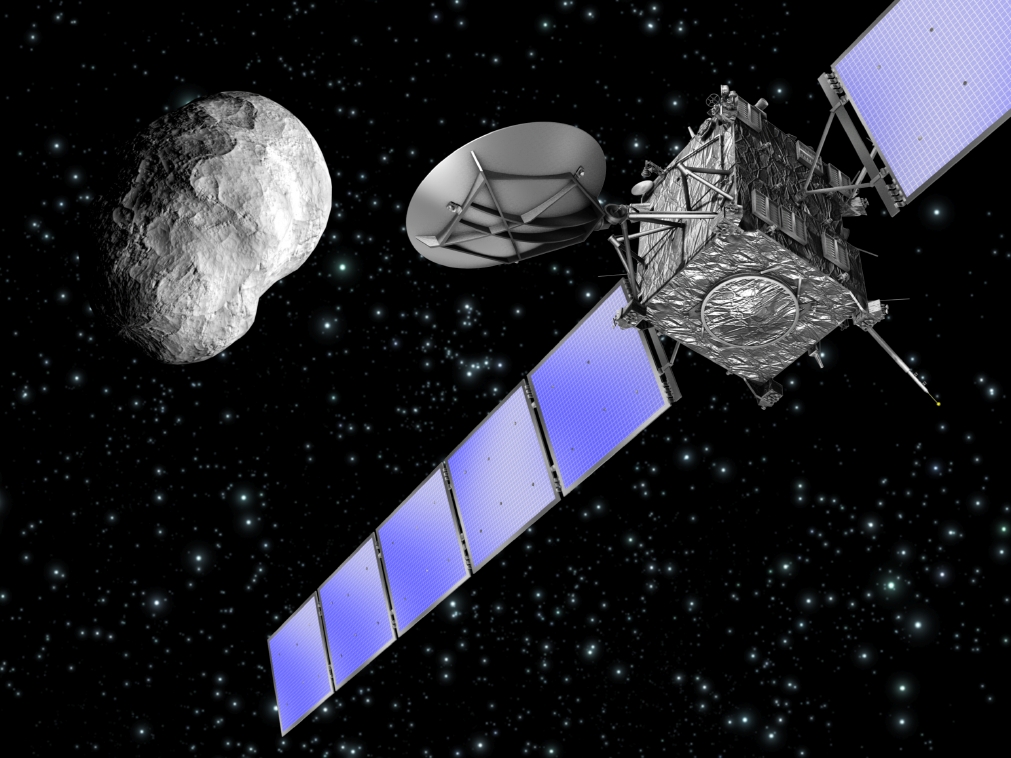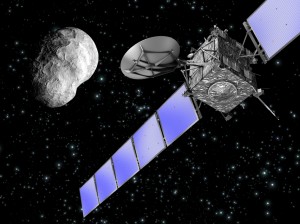August 4, 2014 – It has taken 10 years and a journey of 6.4 billion kilometers (4 billion miles) for the European Space Agency’s (ESA) Rosetta spacecraft to achieve rendezvous with the comet 67p/Churyumov-Gerasimenko. Launched on March 2, 2004, the spacecraft has used several gravity-assist swings by the Earth and Mars to push it beyond Jupiter before catching up to the comet seen in these ESA provided multiple images taken by Rosetta on July 20.
The comet, as you can see, has an irregular shape with much brighter patches in an area that appears to link a smaller and larger half. These bright patches may be exposed water ice. The rest of the comet appears darker.
When Rosetta was launched to conserve power in transit it went into a hibernation state for more than 30 months. Then on January 20, 2014, a mere 9 million kilometers (5.5 million miles) from the comet, the spacecraft re-awakened and contacted ESA.
Rendezvous is scheduled for August 6. At that point Rosetta will turn its instrumentation package full on to study the comet in great detail. Part of that study will include selecting a landing site for Philae, the companion robotic lander that is scheduled to touch down on 67p/Churyumov-Gerasimenko’s surface on November 11. The landing will be a challenge because the comet is spinning rapidly. In the low gravity environment of the comet Philae will attach itself to the surface by firing a number of harpoon tethers. Once on the surface instrumentation will study the internal geology and chemistry.
Latest data from 67p/Churyumov-Gerasimenko – temperature readings on the surface equal -70 Celsius (-94 Fahrenheit). Currently the comet is 550 million kilometers (342 million miles) from the Sun. As the comet approaches the Sun and swings around it at speeds of between 55,000 and 135,000 kilometers (34,175 and 83,890 miles) per hour, Rosetta and Philae will conduct ten experiments which will include how the comet’s coma and tail form and how it is physically altered by its solar approach.
The mission end is planned for December 2015.















